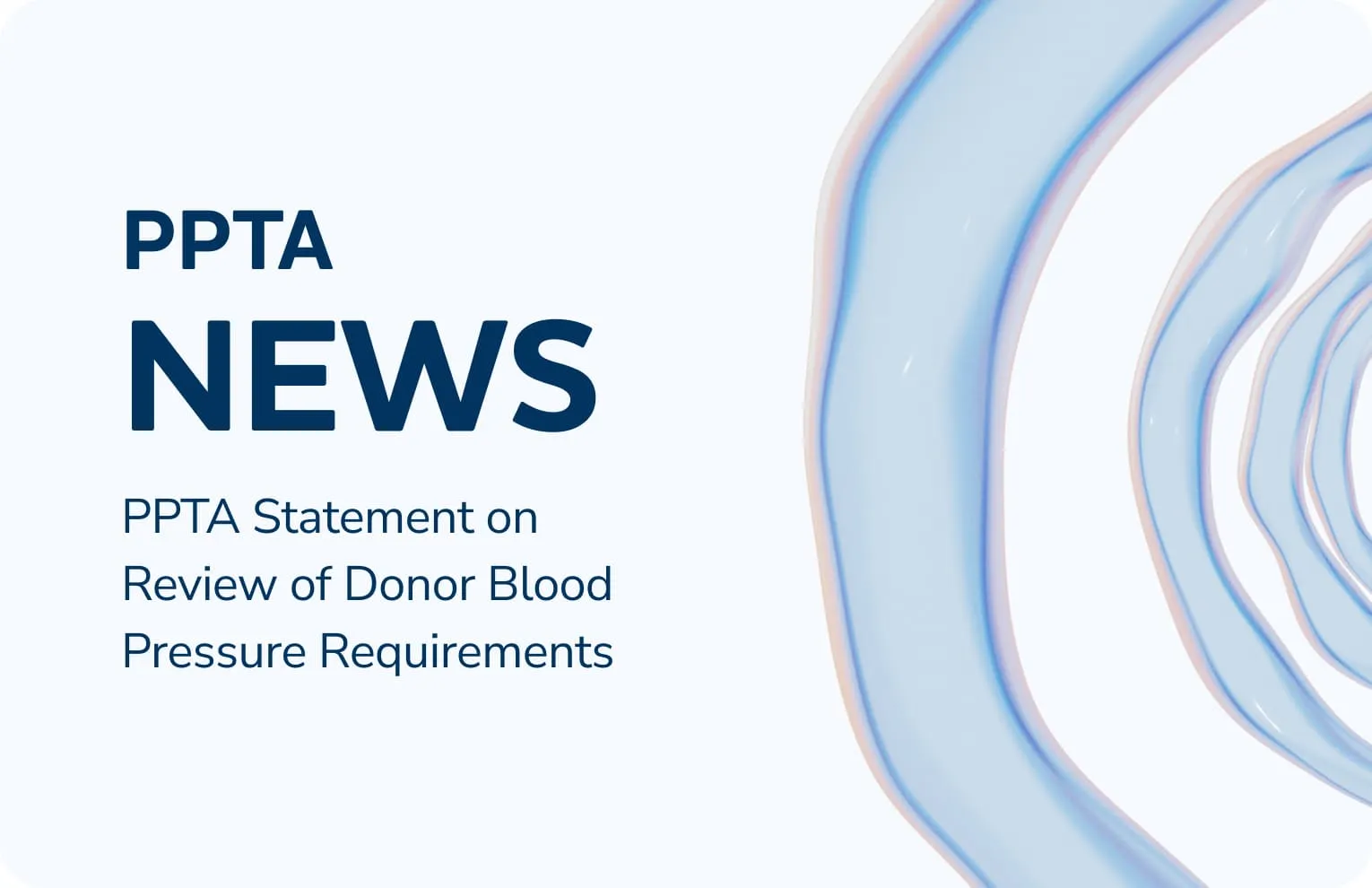
The following documents are included as part of the PPTA Donor History Questionnaire:
Version 3.0 (June 2023) – Medication List updated July 2025
- Full-Length PPTA DHQ
- Full-Length Directions for Use
- Abbreviated DHQ
- Abbreviated Directions for Use
- Medication List
- Risk Poster
The version 3.0 of the questionnaires and accompanying materials have been reviewed by FDA and version 3.0 has been recognized on June 14, 2023, by the FDA in a Guidance for Industry as an acceptable mechanism for collecting donor history information from Source Plasma donors. The materials are consistent with FDA's requirements and recommendations for collecting Source Plasma donor history information. The Guidance for Industry also includes the categories for reporting to FDA.
Version 3.0 includes changes in donor eligibility criteria that are included in two FDA guidance documents:
FDA Guidance, May 2022: Recommendations to Reduce the Possible Risk of Transmission of Creutzfeldt-Jakob Disease and Variant Creutzfeldt-Jakob Disease by Blood and Blood Components
FDA Guidance, May 2023: Recommendations for Evaluating Donor Eligibility Using Individual Risk-Based Questions to Reduce the Risk of Human Immunodeficiency Virus Transmission by Blood and Blood Products
Occasionally, PPTA (usually in consultation with AABB’s donor history task force) determines that a change to the FDA-recognized documents is needed. PPTA will post revisions, noted by the revision date, in the space below. Those documents may differ from the FDA-recognized documents if:
- PPTA determines that the actions FDA has proposed in draft guidance are clear and important enough to warrant updating the DHQ before FDA issues the final guidance document recognizing the new PPTA DHQ version.
- A change is made to the DHQ and/or materials related to donor eligibility issues for which FDA makes no requirement nor recommendation (e.g., history of cancer; previous organ, tissue, or bone marrow transplant and bone or skin graft).
- The Medication Deferral List has been updated.
When a change is made, PPTA will notify membership via communications and the Leadership Briefing prior to posting the new version on the PPTA website.
Licensed blood establishments planning to implement a new version of the PPTA DHQ materials that has not been officially recognized by the FDA must submit a formal request to the FDA for approval. The facility should contact their Consumer Safety Officer for the proper reporting category.
Ebola
Based on FDA’s Guidance for Industry: Recommendations for Assessment of Blood Donor Eligibility, Donor Deferral and Blood Product Management in Response to Ebola Virus, January 2017 PPTA is providing the following guidance for the temporary addition of materials to be used during periods with widespread transmission. This information applies following the CDC’s classification of one or more countries as having “widespread transmission or cases in urban areas with uncertain control measures.” The temporary additions should be added within 4 weeks of the date that CDC classifies one or more countries as having widespread transmission and should continue to be used until 4 weeks after the date CDC classifies the last affected country as a country with former widespread transmission.
Ebola temporary additions to questionnaires, flowcharts and risk poster:
Risk Poster:
Do NOT donate if you...In the last 8 weeks
- Have lived in, or travelled to, a country with widespread Ebola virus disease or infection.
- Have had sexual contact with a person has EVER had Ebola virus disease or infection, regardless of the length of time since recovery.
- Have had direct exposure to the body fluids (such as blood, urine, stool, saliva, semen, vaginal fluids or vomit) of a person with Ebola virus disease or infection, including a person under investigation.
- Have been notified by a public health authority that you may have been exposed to a person with Ebola virus disease or infection.
PLEASE CONTACT THE CENTER, if you develop the following symptoms within the 8 week period following donation:
Fever Diarrhea
Severe Headache followed by: Vomiting
Muscle Pain and Weakness Abdominal Pain
Fatigue Hemorrhage (bleeding or bruising)
Full-length and Abbreviated Questionnaires and Directions for Use Flowcharts:
The additional material intended for use during times of widespread transmission should be added at the end of the current Risk Posters, Full-length DHQ, Abbreviated DHQ and Directions for Use (flowcharts).
PPTA has worked with AABB’s Donor History Task Force in developing these additional tools. For more information, please visit AABB’s website.
Information Related to COVID-19 infection
The FDA has issued information related to COVID-19: Updated Information for Blood Establishments Regarding the Novel Coronavirus (COVID-19) Outbreak, May 11, 2020.
Information Related to Donors’ Use of Antiretroviral Medication for HIV Prevention and Treatment
FDA Important Information for Potential Donors of Blood and Blood Products, December 2019
AABB Association Bulletin #20-04 “The Impact on Blood Safety of Effective Antiretroviral Medications for HIV Prevention and Treatment” provided for information purposes and is not part of the PPTA DHQ





